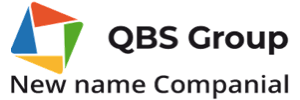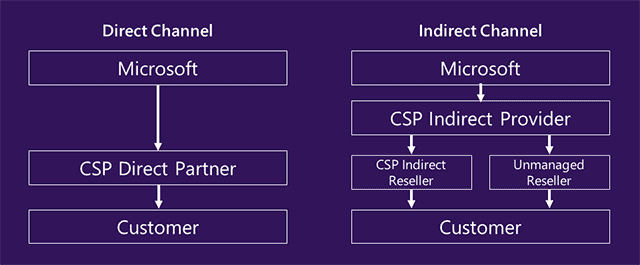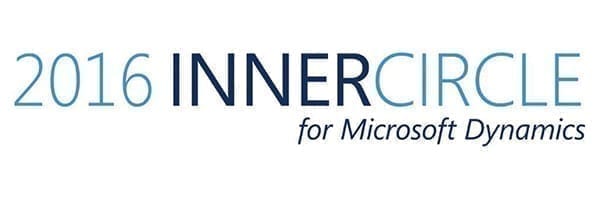2016 Will be the year in which the software-as-a-service model – simply put: the cloud – achieves its worldwide breakthrough for business software. But how will your software vendor respond to that? In this blog we’ve analysed the offerings of the larger ERP vendors for you and also provide you with tips for your own investigation.
According to Panorama Consulting, cloud computing is now well beyond the hype phase. The consultancy considers the purchase of a cloud-based ERP system to be just as normal as buying a car with 4 wheels. But how will your software vendor respond to this? Does your vendor have any cloud strategy at all? And if so, what does this strategy mean for the support of your current system and software versions? Not just today, but in the future as well. An analysis.
A rosy future is universally predicted for the market for cloud-based ERP solutions. A future so rosy that no serious vendor can afford to ignore this trend. This means that solution providers must make strategic choices. And the impact of those choices can be huge for your organisation! That’s why it’s now more important than ever to follow your vendor – even if you’re not yet using any ERP software from the cloud. Or even if you’re not even thinking actively about it yet! The burning question is: can you continue into the future without problems using your current system? Or should you be preparing seriously for the transition to another system?
Comparison with Y2K
In essence, for vendors, the transition to the cloud is quite similar to the year 2000 issues. Remember that? Everyone doubted whether traditional systems could function technically in the new century. All the vendors felt obliged to review their portfolio and make strategic choices. And that led to a huge restructuring of product offerings. The result was that many customers felt forced to switch to other systems much earlier than they had planned. With all of the attending financial and organisational consequences.
Strategic issues
It would appear that we are standing on the brink of a similar operation. Those vendors offering multiple and varying ERP solutions these days, in particular, must feel almost forced to rationalise their range for commercial reasons.
In addition, the vendors themselves must also answer a few critical questions:
- Which of the current ERP systems are technically suitable for functioning in the public cloud as so-called “multi-tenant solutions”?
- How large are the investments in these adaptations? And can those investments still be made profitable?
- What should be done with the support and development of the traditional on-premise variants of the various ERP systems and system versions? What will this cost? And can those costs be justified from a commercial standpoint?
The position of the large ERP vendors
If we have a look at the large international ERP vendors, we see several of them offering multiple, often partially overlapping solutions at this moment. For example, Infor and Oracle’s many acquisitions have left them with a patchwork collection of ERP and CRM systems. A situation in which each solution also has multiple versions in use. Both companies require an actual alphabetic index in order to present their portfolios on their websites!
Some solution providers also make their traditional systems suitable for use in the cloud, as Microsoft does, for example. Still others, such as Sage and SAP, have developed entirely new systems for the cloud. For this group of vendors, particularly, the question arises about what the future of the “older” systems looks like. In vendor-speak: is your ERP solution one of the strategic systemsfor the future or can it better be labelled a cash cow? Often, the vendor’s website provides a first indication of this distinction. If your solution is not on the homepage, you have a good reason to worry. But if your solution is not mentioned on their website at all, you probably have a big issue!
Rough market analysis of ERP vendors
With my best interpretation, a first rough analysis of the websites of several leading ERP vendors reveals the following picture:
- Infor provides and/or supports an impressive array of solutions. The Solutions page on their website boasts no less than 68 (!) different solutions in the domains of ERP, CRM, HCM, PLM, SCM and EFM. In several cases, it’s unclear exactly which of the solutions is being presented here. In any case, these include Infor LN (previously Baan), Infor LX, Infor M3 (previously Movex), Infor System21, Infor Pegasus, Infor Evolution and Infor SunSystems. From the website, it’s not immediately clear which solutions comprises the most strategic offering(s). But would really all 68 be of strategic value for Infor?
- Microsoft supplies and/or supports four different ERP solutions: Dynamics AX, Dynamics NAV, Dynamics GP and Dynamics SOL. The two last are in use in the English speaking countries only; the first two worldwide. Dynamics AX is offered to larger (international) companies. Dynamics NAV, GP and SOL are the solutions for the small and medium sized companies. Dynamics AX, NAV and GP are cloud ready and appear to be strategically important for Microsoft.
- Oracle provides and/or supports the Oracle E-Business Suite, Oracle JD Edwards, Oracle Peoplesoft and Oracle Fusion Applications, among others. For Oracle JD Edwards there are even two solutions: World and EnterpriseOne. Here, Oracle Fusion Applications would appear to be the main strategic platform for the future. Although the company seems to be struggling for many years in bringing this solution to the market.
- Sage supplies and/or supports an impressive series of ERP solutions. It starts with Sage Line 50, Line 100, Line 200 and Line 300. These are their traditional product lines. On top of that there is a series of cloud offerings called Sage One, Sage Live, Sage Impact and Sage X3. The last one seems to be the strategic Sage offering. But is X3 the cloud solution that really has a fit with all their existing customers?
- SAP provides and/or supports SAP S/4HANA, SAP Business All-in-One, SAP Business ByDesign, SAP Business One, SAP ERP and SAP R/3. SAP positions Business One as a solution for small businesess. All-in-One and Business ByDesign for medium-size companies and S/4HANA for enterprise companies. Business ByDesign seemed to be their strategic cloud offering. However, after various attempts in bringing Business ByDesign to the market, last year it was ‘moved’ to their partner channel. It’s unclear what the impact of that move is.
What’s your situation?
For many customer companies, their ERP system is the business’s beating heart. And that makes sense. Because in our rapidly changing market, the availability of the right information at the right time is strategically important. So you probably can’t afford to settle for less than the very best. If you want to avoid surprises, it’s a good idea to keep a close eye on your vendor. And to gain a clear view in the short term of what your system’s future looks like. More specifically: the future of the system version you’re currently using. So that you know whether you need to take action. Organisations that have larded their systems with a significant dose of customisation, particularly, would appear to be treading on thin ice.
The implementation partners of these ERP vendors should raise similar questions. Are your investments in capabilities and knowledge of your solution still well spend? And if unfortunately your not on the right track – does your vendor offer a partner business model for their new cloud solution anyway?
Practical suggestions
Here are a few practical suggestions for your own investigation:
- Follow your vendor’s website closely. Is your system still being actively promoted to new buyers? Or is it no longer mentioned at all?
- Be sure to visit the next annual customer day and ask pointed questions there.
- Ask your vendor for the most recent version of his company’s product roadmap in order to see the concrete future plans for your system and version.
- Investigate whether your system is already available in the cloud. Or whether that will soon be available. But also determine how long your system will continue to be supported as a traditional on-premise version.
- Ask your vendor for a written statement about the strategic value of (the version of) your solution in his portfolio.
- Get acquainted with your vendor’s user group. They often have a better overview of the developments. And you can also spar there with comparable customers.
Support versus continued development
In your investigation, it’s a good idea to pay attention to the distinction betweensupport on the one hand and continued development on the other. Naturally, every vendor will want to support his existing systems for a certain amount of time. With such services as a help desk, training and consultancy. It’s also perfectly reasonable to expect that a given period will occur for all current systems during which new, error-resolving versions appear – so-called “bug fixing”. However, the question of whether your vendor will continue to develop (the version of) your solution is crucial. Development which not only resolves bugs in new versions, but in which new functionality also becomes available. In which new versions of the surrounding systems are supported, such as the Microsoft Office tools. And in which modern technologies, such as new devices, continue to be made accessible. Including near-future things like speech recognition and handwriting recognition. Development that closely follows rapidly changing trends in Social, Mobile, Big Data and the Internet of Things. And in which legal and regulatory changes that are relevant to you still are implemented in your system pro-actively and in a timely manner. If your ERP system is strategically important to your enterprise, then this last variant is the only one that will satisfy you (in the future), right?
The importance of transparency
For an ERP vendor, it’s not exactly simple to offer perfect transparency, of course. After all, huge numbers of customers are involved. Along with considerable financial interests. But considering the strategic importance of this issue as your enterprise faces the future, it’s only fair to expect complete transparency from your vendor! So that you know exactly where you stand. And where you’ll be in the coming years. This is also a perfect occasion for vendors to demonstrate how transparent and mature they actually are.
I’d love to hear your findings!






















